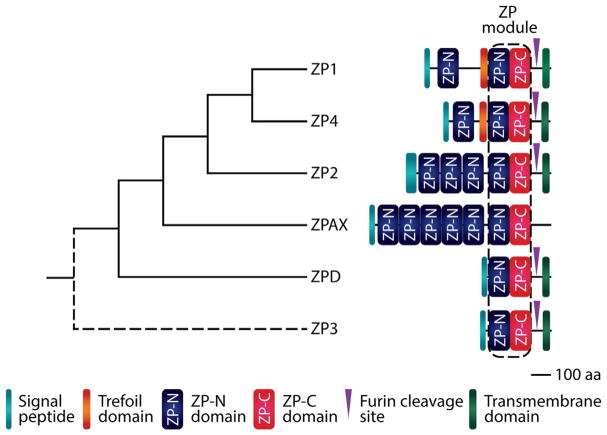Fig. 1.
Phylogeny and domain structure of zona pellucida (ZP) glycoproteins. ZP3 is thought to be the ancestral ZP gene, but its position in the tree is unknown (as indicated by the dashed line). aa, amino acid. Schematics for ZP1, ZP2, ZP3, and ZP4 are based on the human homologs, and ZPD and ZPAX are based on the homologs from Xenopus tropicalis. Adapted from Callebaut, I., Mornon, J. P., & Monget, P. (2007). Isolated ZP-N domains constitute the N-terminal extensions of zona pellucida proteins. Bioinformatics (Oxford, England), 23(15), 1871–1874. btm265 [pii]; Claw, K. G., & Swanson, W. J. (2012). Evolution of the egg: New findings and challenges. Annual Review of Genomics and Human Genetics, 13, 109–125. doi: 10.1146/annurev-genom-090711-163745; Goudet, G., Mugnier, S., Callebaut, I., & Monget, P. (2008). Phylogenetic analysis and identification of pseudogenes reveal a progressive loss of zona pellucida genes during evolution of vertebrates. Biology of Reproduction, 78(5), 796–806. biolreprod.107.064568 [pii]; Wilburn, D. B., & Swanson, W. J. (2018). Egg, comparative vertebrate. In M. A. Skinner (Ed.), Encyclopedia of reproduction (2nd ed.). Academic Press.

